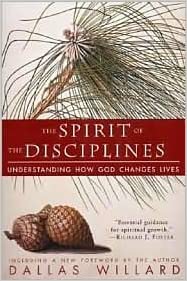Throughout the last half of the book, Wilder repeatedly states that spiritual practices (as Dallas taught them) operate primarily in what he calls the “slow track” of the brain (left hemisphere), and that using these practices results in very little change. For him they are the slow way to grow spiritually.
Aside from the fact that there is no such thing as an experiential activity that only operates on one side of the brain, the facts of history show a very different story.

Dallas used to hold a two-week retreat each year for some of the doctoral students at Fuller Seminary. The students would spend most of that time at a local retreat center, listening to Dallas’ vision of the Chistian life and engaging in the practices he gave them to do. Many of them were quite changed in those two weeks, despite having been Christians for years and dedicating their lives to ministry. That can hardly be called a “slow” way to change.
Similarly, people who enroll in formal spiritual formation training often experience more change in the first six months than in the previous decade. Not a slow process.
In Spirit of the Disciplines, Dallas wrote about how to make use of spiritual practices, and how to avoid turning them into dead practices or exercises in legalism. Which means he was fully aware that how one engages in them can make a great deal of difference. Wilder fails to acknowledge that Dallas understood these matters quite well, and instead insists that such practices are weak and fairly ineffective.
In short, Wilder’s description of how spiritual practices work in the brain fails both science and personal experience, and misrepresents Dallas’ perspective regarding how and why they work so well.
Some examples of how Dallas’ approach to spiritual disciplines is represented in the book:
“Willful focused attention [Dallas’ approach] is a weak force … the right strategy [attachment] will take us places that simple choices [Dallas’ VIM] cannot.” (p.127).
(Implied) Dallas uses the same approach as the Greeks who relied on intellect (p.147).
“We begin by comparing the focused attention of the will (the slow track in the brain) [i.e. Dallas’ approach] with joint-directed attention in the fast track [Wilder’s approach] … focused attention is characteristic of activities dominated by the left brain” (p.149).
“The slow track (focused attention) picks options based on what we think. The fast track (joint-directed attention) allows us to share a mutual mind with God, where God highlights priorities.” (p.150).
“The slow track [Dallas’ approach] cannot grasp reality” (p.151).
“There are basically two errors that lead to striving. The first error is trying to correct an iniquity (deformity) with the indirection of spiritual disciplines … we need … healing” (p.172). As if inner healing is not a spiritual practice, or that spiritual practices cannot produce healing.
“I wanted to know if combining two thousand years of spiritual practices with how the brain learns identity and character helps us become disciples” (p.181). Does this imply that spiritual practices do not develop identity and character? This would make more sense if it simply used brain science to hone some of our spiritual practices. As is, it implies that something has been missing for two thousand years.